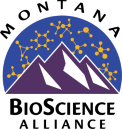Extensive research has been prepared over the past two decades on the biosciences in Montana. The reports below can provide information and insights to guide bioscience enterprises as they develop their strategies for growth and development.
Montana Bioscience Cluster Initiative Annual Report 2023
The cluster initiative brought together representatives from the private sector, education, economic development, trade associations, and others to provide technical assistance as well as support, training, and mentoring to new and established life science businesses, entrepreneurs, and students.
2023 Life Sciences Workforce Trends Report
This biennial report provides a national snapshot of the most pressing current and anticipated talent needs of the nation’s dynamic life science industry. This year’s report distills a set of key themes sourced from 185 executive interviews and nearly 700 survey responses from companies in eighteen states and Puerto Rico, as well as an assessment of nearly 2.8M job postings from life science companies over the last four years.
BIO/CSBA 2022 TEConomy Report
BIO and our state affiliate partners are pleased to share with you the BIO/CSBA 2022 TEConomy Report. This report, titled: “The U.S. Bioscience Industry: Fostering Innovation and Driving America’s Economy Forward” is a biennial report that gives extensive data on the U.S. bioscience industry, the country’s bioscience ecosystem and the sector’s growth on state and local levels. You can download the report and state-specific fact sheets here.
Economic Impact and Profile of Montana Bioscience Firms 2022
By drawing on both publicly available data as well as survey responses from Montana bioscience companies, this report, underwritten by the Montana BioScience Alliance, presents a comprehensive picture of the industry’s activities and how those activities support the economy as a whole.
Making the impossible possible — Driving the bioscience economy forward during the COVID-19 pandemic, 2022
Now in its sixth edition, this report analyzes legislative and regulatory initiatives at the state and regional levels for economic development in the biosciences in 2021. Montana’s 4th “F” Fund is cited.
RESEARCH IN YOUR BACKYARD: DEVELOPING CURES, CREATING JOBS – PHARMACEUTICAL CLINICAL TRIALS IN MONTANA, 2021
This report shows how biopharmaceutical research companies continue to be vitally important to the economy and patient health in Montana. Since 2004, biopharmaceutical research companies have conducted or are conducting more than 1,200 clinical trials of new medicines in Montana in collaboration with clinical research centers, hospitals and local research institutions. These clinical trials have investigated or are investigating some of Montana’s biggest health care challenges, including asthma, arthritis, cancer, diabetes, cardiovascular disease and gastrointestinal diseases.
THE STATE OF INNOVATION IN ANTIBACTERIAL THERAPEUTICS, 2022
Antibacterial drug discovery and development during the 20th century yielded one of the greatest armaments available to physicians, with more than 90% of all antibacterial drugs discovered during this period. Since the introduction of numerous antibiotic classes during the 1940s, deaths from bacterial infections have been reduced significantly. However, this next century is already presenting challenges that may render these older antibiotics obsolete. This BIO Industry Analysis report investigates recent investment into antibacterial innovation and the current clinical pipeline that will help bridge the gaps in the antibacterial armamentarium.
CLINICAL DEVELOPMENT SUCCESS RATES AND CONTRIBUTING FACTORS 2011-2020
This study aimed to measure clinical development success rates, contributing factors to those outcomes, and timelines of clinical trials. With the goal of providing current benchmarking metrics for drug development, this study covers the most recent decade of individual drug program phase transitions from January 1, 2011, to November 30, 2020.
FEDERAL RESEARCH FUNDING FOR MONTANA, NATIONAL INSTITUTES OF HEALTH, & NATIONAL SCIENCE FOUNDATION REPORTS, 2020
The three reports below capture federal funding that supports researchers and trainees who conduct biological and biomedical research in Montana.
MONTANA FACT SHEET, NATIONAL SCIENCE FOUNDATION, 2020
NSF has made a significant investment in Montana by supporting research, STEM education, small business startups, and our academic institutions. Learn the story in this report.
LIFE SCIENCES WORKFORCE TRENDS REPORT, 2021
Trends are identified every two years by the Coalition of State Bioscience Institutes. This year the report focuses on workforce impacts from the disruption and turmoil of 2020. It also provides data supporting the potential for high-paying bioscience and technology jobs in Montana.
THE BIOSCIENCE ECONOMY: PROPELLING LIFE-SAVING TREATMENTS, SUPPORTING STATE & LOCAL COMMUNITIES, 2020
Montana’s bioscience industry is modest in size but has grown in recent years. You’ll find the most recent statistics in the Montana section of this report. Click on the map of Montana and see how we compare to the U.S. in key metrics. Read more about the report here.
MONTANA LIFE SCIENCE IMPACT REPORT, 2020
Provides key statistics that define biosciences in Montana including a number of jobs, payroll, earnings, and investments.
MONTANA INFORMATIONAL WAGE RATES BY OCCUPATION, 2020
This report from the Montana Department of Labor shows wage information for specific job titles.
WORKFORCE TRAINING AND REMOTE DELIVERY INITIATIVE, 2020
This program, which is funded through the Governor’s Emergency Education Relief (GEER) fund, identifies gaps in health care jobs and strategies for filling those gaps.
MONTANA BIOSCIENCE CLUSTER REVISITED, 2013
This report updates research from 2002-03 that identified, analyzed and mapped Montana’s bioscience enterprises enhancing our understanding of the most pressing needs of the sector and increasing our ability to support its growth.
CLUSTERS OF CREATIVITY: INNOVATION AND GROWTH IN MONTANA, 2003
This is the ground-breaking report submitted to the Governor’s Office of Economic Opportunity that documented the impact of the life sciences cluster in the state.
